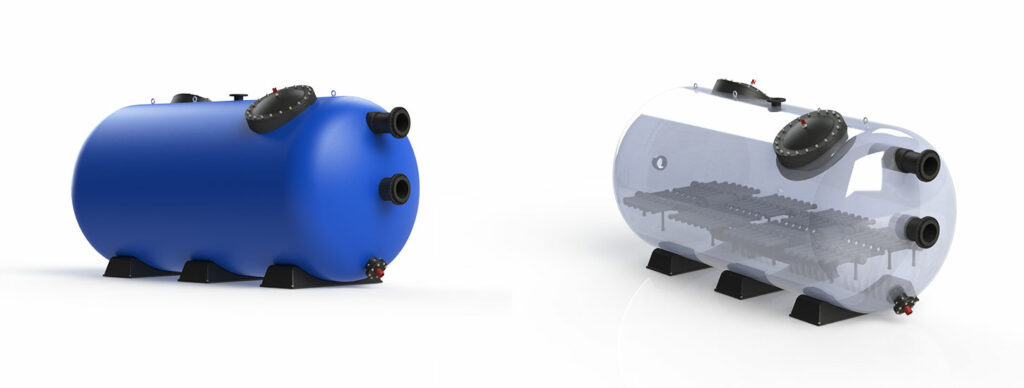What is bed expansion?
Bed expansion in media filters is defined as the level of increase in the volume of filter media. There is a resting or a working bed depth and an expanded bed depth. This is the level to which the media needs to rise to during upflow or backwash.
Types of media that require backwashing and expansion to remove trapped foreign particles include:
- Filter Sand
- Zeolites
- Glass
- Ion Exchange Resins
- Anthracite
- Granular Activated Carbon
- Greensand and others
Expansion is caused by a flow of water (and air where used) at a certain velocity (depending on the bulk density of the media) to lift and separate the media bed. Usually, bed expansion is expressed as the percent of increase in bed depth.
For e.g. If 50% bed expansion is required and the resting bed depth is 1000mm, then the expanded bed depth should reach 1500mm during backwash.
Some key points you need to allow for when sizing and designing your media filters are as follows:
- Ensure the diameter of the filter does not exceed the available pump capacity. Not enough volume = not enough velocity which = insufficient bed expansion.
- The cylindrical wall height of the vessel is calculated correctly. If the cylinder height is not high enough it means that the media has no room to expand and it will be discharged out the waste line when backwashing.
- If the expanded bed height is 1500mm, then you must have a filter vessel with a 1500mm cylindrical wall height.
The above 3 points are critical when sizing a filter. It is important to ensure your filter bed remains healthy and clean to ensure a long service life of the media.
Allowing for sufficient bed expansion in your initial calculations will eliminate operational issues in the future.



